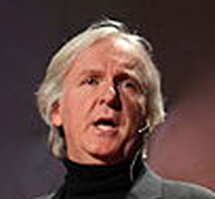Redefining Environmentalism
The “Breakthrough Institute,” was founded in 2003 by Ted Nordhaus and Michael Shellenberger, authors of “The Death of Environmentalism” and Break Through, and aspires to be “a paradigm-shifting think tank committed to modernizing liberal thought for the 21st Century.” Last week Nordhaus and Shellenberger delivered a lecture at Yale University that provided myth-shattering explanations for recent failures of the environmental movement. Equally significant, and very encouraging, is that in their lecture, Shellenberger and Nordhaus also set forth principles for redefining and revitalizing environmentalism that are realistic and thoughtful. The full text of their remarks, entitled “The Long Death of Environmentalism” are posted on their website.
Here is the problem with environmentalism according to Nordhaus and Shellenberger:
“Today, environmental efforts to address climate change and build a green economy lie in ruins. The United States Congress this summer once again rejected climate legislation that even had it succeeded would have had virtually no impact upon U.S. carbon emissions over the coming decade. The magnitude and consequence of this defeat are poorly understood outside of Washington. Greens had the best opportunity in a generation — a Democratic White House and large Democratic majorities in Congress. But they banked everything on a single bill and walked away with nothing — or rather worse than nothing, since today environmental credibility with lawmakers of both parties is today at an all-time low. Meanwhile, green stimulus investments ended up creating very few jobs. Those that it did create were low-wage and temporary custodial jobs — not the high-wage manufacturing jobs that created the black middle-class after World War II. And today, the clean tech sector– the darling of high tech VC’s at the height of the green bubble– is in a state of collapse as stimulus funds expire, large public deficits threaten clean energy subsidies both here and abroad, and Wall Street firms short clean tech stocks.”
Whether or not you agree with all of Nordhaus and Shellenberger’s premises – such as the big one, that anthropogenic CO2 is truly destined to cause catastrophic climate change, their take on what has happened to environmentalism is not only accurate, but a refreshing burst of candor and clarity coming from the heart of the environmentalist community. For example, they acknowledge that the overwhelming preponderance of media spending came from the climate change alarmists, and not from the climate change deniers:
“In the wake of the crash, environmentalists pointed their finger at the usual bogeymen. They claimed that the problem has been that fossil fuel interests have massively outspent underdog environmental groups, funding skeptics to mislead the public and duping the media into giving too much credence to skeptical views about climate change. In reality, the environmental lobby massively outspent its opponents. In just the last two years, by our rough estimate environmental organizations and philanthropies spent somewhere north of $1 billion dollars advocating for climate action. In contrast, the U.S. Chamber of Commerce, Exxon-Mobil, the Koch Brothers, Big Coal, and the various other well publicized opponents of environmental action might have spent, when all was said and done, a small fraction of that. Indeed, much of the U.S. energy industry, including the largest utilities, helped write and lobbied for U.S. climate legislation.”
Equally refreshing is the admission by Nordhaus and Shellenberger that “green jobs” and “clean technology” are typically drains on economic productivity, not engines of economic growth:
“Many greens concluded was that they needed to reframe global warming as an economic opportunity, not an ecological crisis. And so carbon caps and the soft energy path were repackaged as economic and jobs policy despite little evidence those policies would, on balance, create jobs. In fact, most credible economic models of proposed cap and trade policies, including those produced by government agencies, predicted the opposite.”
Nordhaus and Shellenberger go on to basically accuse environmentalists, climate alarmists in particular, of discrediting not only the broader environmental movement, but the entire clean technology movement, because they oversold clean technology as the panacea for both environmental and economic challenges – when in fact, certainly in the short run, it was neither:
“Efforts to reframe climate policy as economic policy ended up discrediting what had been a broadly popular agenda to invest in developing new energy technologies by rendering it indistinguishable from the profoundly polarizing climate debate. ”
What makes Nordhaus and Shellenberger’s perspective very interesting and potentially very important is the fact they are arguing these points as individuals with impeccable environmentalist and liberal credentials. The fact they recognize these sobering realities that constrain both environmentalism and clean technology make their conclusions worthy of a careful read. Here is a summary of the twelve points Nordhaus and Shellenberger believe should inform a revitalized, reinvented environmentalism:
Twelve Theses for a Post-Environmental Movement – by Ted Nordhaus and Michael Shellenberger
(the text here is abbreviated by the editor, and the reader is encouraged to read the complete version on the Breakthrough Institute’s website)
“(1) More, better or louder climate science will not drive the transformation of the global energy economy. The resources necessary to make such a transformation will not be forthcoming in pursuit of climate benefits that are uncertain and far off in the future… our understanding of how that warming impacts the climate system at regional and local scales will become harder to characterize, not easier.
(2) Stop trying to scare the American public.
(3) The most successful actions will not be justified for environmental reasons [they will be justified for reasons of national security or for economic reasons]. We should put shared solutions at the center of our politics, not our view of the science.
(4) We will not solve global warming through behavior changes… much of the world already lives in dense cities – more and more of us every day… and as they do they will use vastly more energy and resources, not less.
(5) Stop treating climate change as if it were a traditional pollution problem.
(6) We will not regulate or price our way to a clean energy economy. Regulatory and pricing solutions tend to succeed when we have good, low cost alternatives to the activities which we are attempting to discourage or eliminate.
(7) The so-called ‘soft energy path’ is a dead end. For centuries, the global economy has used ever more energy, even as it has used energy ever more efficiently and renewable energy. Renewables still cost vastly more than fossil based energy.
(8) We will not internalize the full costs of fossil fuels, even if we are able to agree upon what they actually are [the calculations are too subjective]. The degree that we do internalize the cost of carbon will be determined by the tolerance within specific political economies for policies that increase energy costs.
(9) We need to make clean energy technologies much cheaper in order to decarbonize the global energy economy.
(10) We have to get over our suspicion of technology, especially nuclear power.
(11) We need to embrace again the role of the state as a direct provider of public goods. Think of a transformative technologies developed over the past century is the result of government investing in those technologies at a scale that private firms simply cannot replicate.”
(12) Big is beautiful. The rising economies of the developing world will continue to develop whether we want them to or not. The solution to the ecological crises wrought by modernity, technology, and progress will be more modernity, technology, and progress. The solutions to the ecological challenges faced by a planet of 6 billion going on 9 billion will be large central station power technologies that can meet the energy needs of billions of people increasingly living in dense mega-cities, industrial scale agriculture, desalinization and other technologies for gardening planet Earth that might allow us not only to pull back from forests and other threatened ecosystems but also to create new ones.”
For a libertarian leaning fiscal conservative who is 99% convinced anthropogenic CO2 will not cause catastrophic climate change, yet embraces good government, energy security, and reasonable environmental policies, these twelve theses from Nordhaus and Shellenberger are most encouraging. They provide a basis for a genuine dialog between Republicans and Democrats, one that might yield genuine progress towards environmental sustainability combined with sustainable economics.

Edward Ring is a contributing editor and senior fellow with the California Policy Center, which he co-founded in 2013 and served as its first president. He is also a senior fellow with the Center for American Greatness, and a regular contributor to the California Globe. His work has appeared in the Los Angeles Times, the Wall Street Journal, the Economist, Forbes, and other media outlets.
To help support more content and policy analysis like this, please click here.





